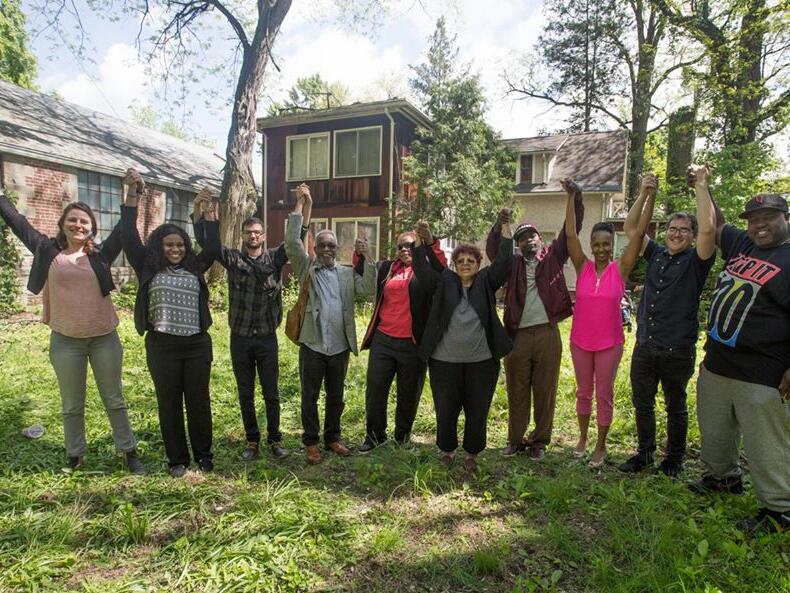Physical Address
304 North Cardinal St.
Dorchester Center, MA 02124
Physical Address
304 North Cardinal St.
Dorchester Center, MA 02124

In Kingston, New York, a group of college students is hard at work on an archaeological project that aims to unearth the history of African Americans buried in a long-forgotten cemetery. These students are digging and sifting soil in an area that, centuries ago, served as a burial ground for enslaved individuals dating back to 1750.
The cemetery, which remained in use until the late 1800s, was buried beneath residential homes as the city expanded. For the last three summers, students from the State University of New York at New Paltz have been unearthing artifacts and human remains, uncovering up to 27 individuals, with one of the most notable findings being a grave marker for Caezar Smith, who was born into slavery and died a free man in 1839.
Tyrone Wilson, the founder of Harambee Kingston, the nonprofit group leading the efforts, emphasizes the importance of this project. “The hardships of those buried here cannot just go down in vain,” he stated. His organization is fundraising to transform the site, known as the Pine Street African Burial Ground, into a memorial that pays tribute to those lost. “We have a responsibility to make sure that we fix that disrespect.”
This cemetery is part of a larger trend across the United States, where forgotten burial grounds for African Americans are receiving newfound attention. The advocates in Kingston acquired a property that covers half of the old cemetery, establishing a visitor center to educate the public about its significance. The burial site has a rich history, with burials continuing here until 1878, well after New York abolished slavery.
Researchers have found that those interred were laid to rest with their feet facing east, in keeping with a cultural belief that they would rise facing the sun on Judgment Day. Remains discovered on the Harambee property are preserved in their original locations, while excavations on nearby land have led to discoveries that are then moved for reburial at the designated site.
Anthropology major Maddy Thomas, who participated in the digs, expressed a sense of duty towards the work. “I don’t like when people feel upset or forgotten,” she explained. “And that is what’s happened here. So we’ve got to fix it.” The goal is not just to excavate but to offer a respectful resting place that reflects the African heritage of the individuals buried there. The fundraising target is $1 million for this transformation, which will include a prominent marker in the yard.
Many graves in the cemetery were likely marked with simple stones, but the identities of those interred remain largely unknown. Joseph Diamond, an associate professor of anthropology, noted that only one headstone has been recovered with a name—a marker for Caezar Smith. Historical research has also identified two others potentially buried there, including a man named Sam and a young girl named Deyon, who was executed for a crime.
The cemetery faced neglect over the years, initially covered by a lumberyard by 1880. It wasn’t until 1990 that Diamond was made aware of its location while conducting a survey. A chance discovery by Andrew Kirschner, the property owner who unearthed bone fragments while digging, provided the vital evidence needed to advocate for the site’s preservation.
Despite the revelations, there was considerable skepticism about the cemetery’s existence, even as plans were drawn up in 1996 for a parking lot that threatened to cover the area entirely. It wasn’t until advocates secured the property in 2019 that progress could be made towards honoring the memories of those buried there.
Other cities have witnessed similar stories of uncovering African burial sites. For instance, the African Burial Ground National Monument in Manhattan marks the resting place of about 15,000 Africans until the late 1700s, discovered in 1991. The renovation of a historical school into a courthouse in Newburgh led to the finding of over 100 remains in 2008.
Antoinette Jackson, the founder of The Black Cemetery Network, highlights the ongoing challenges many burial sites face, noting that many have been lost to development or neglect. She describes the cemeteries listed in their records as just the “tip of the iceberg.” In light of the sparse historical records available in Kingston, advocates hope scientific analyses of the remains will help reconstruct lost narratives, offering potential links to living descendants.
Wilson has encouraged local families to contribute DNA samples for testing, viewing it as a critical step in reconnecting individuals with their heritage. “One of the biggest issues that we have in African culture is that we don’t know our history,” he said. “We don’t have a lot of information on who we are.”
Source: Associated Press



